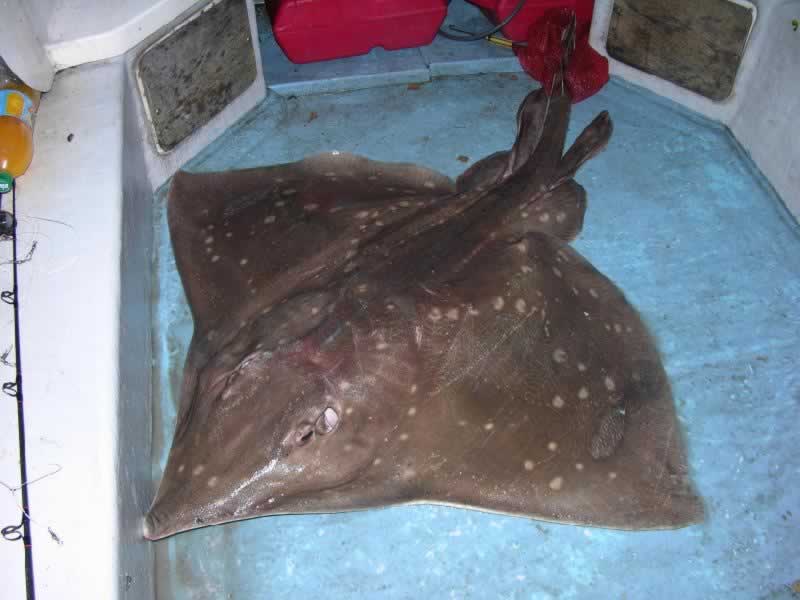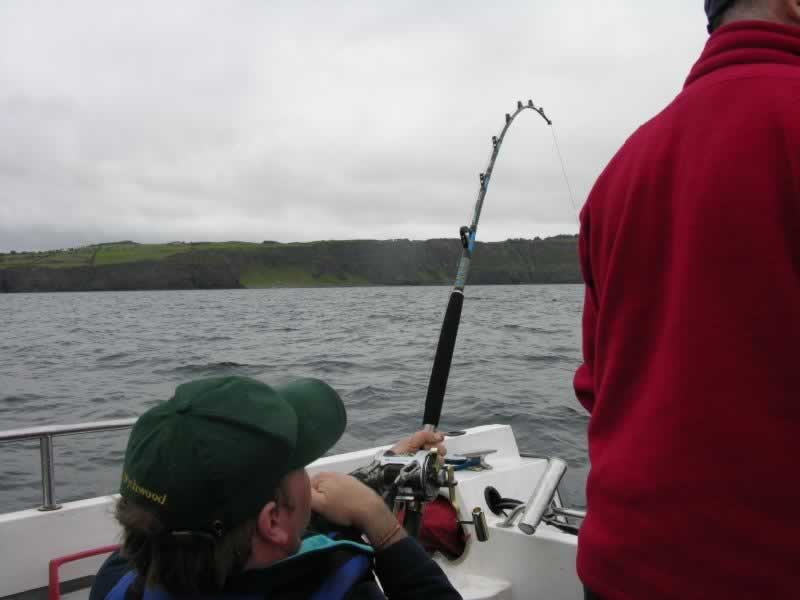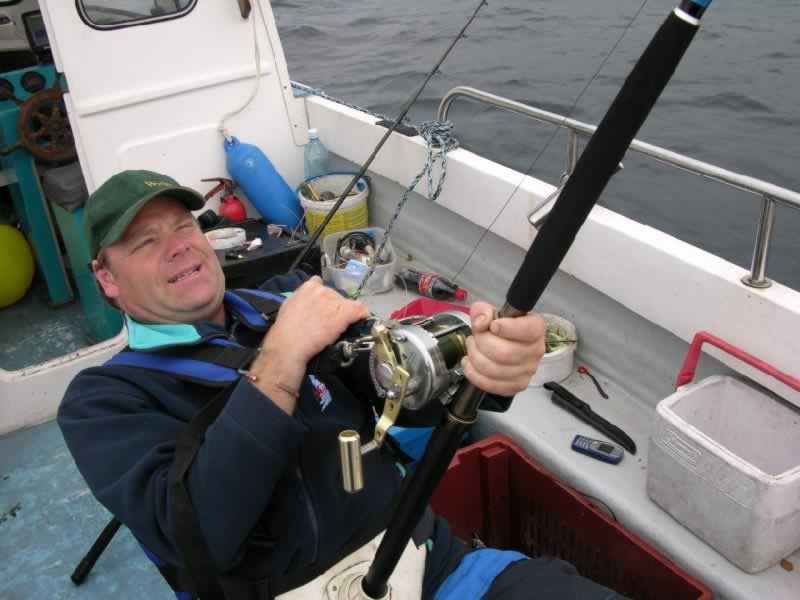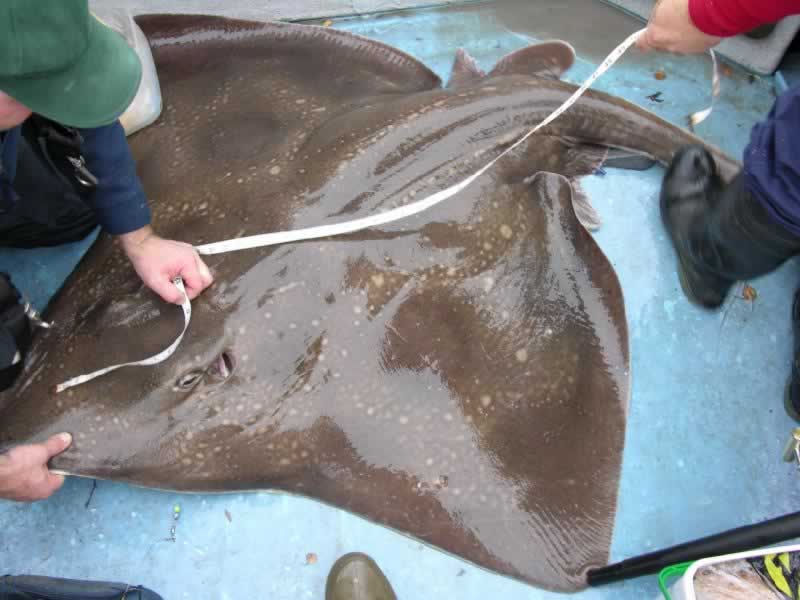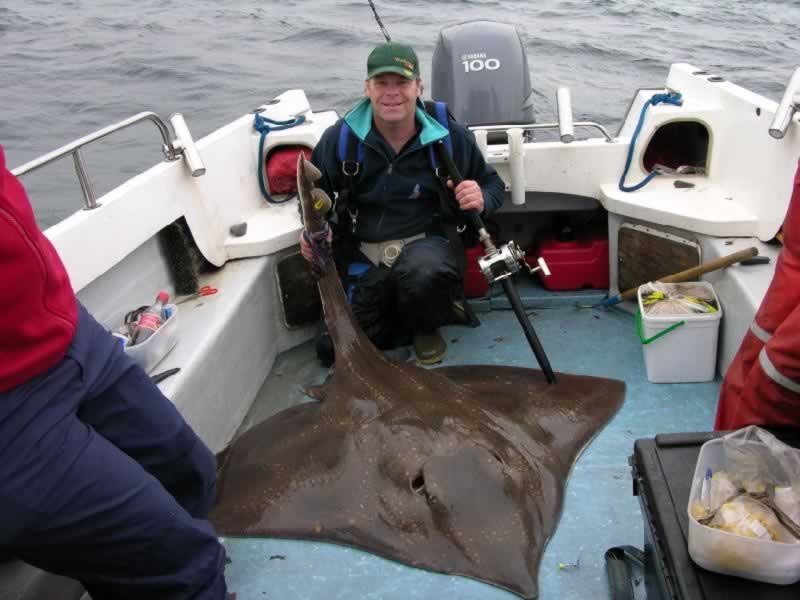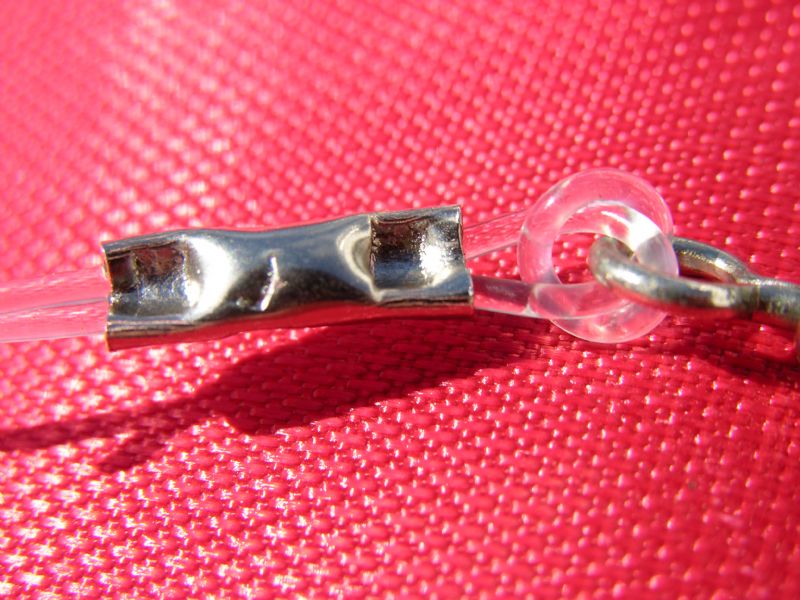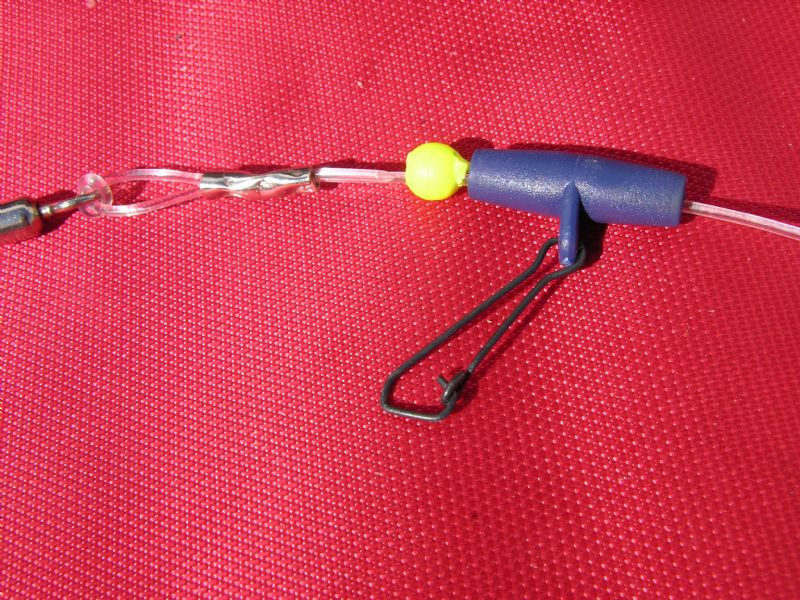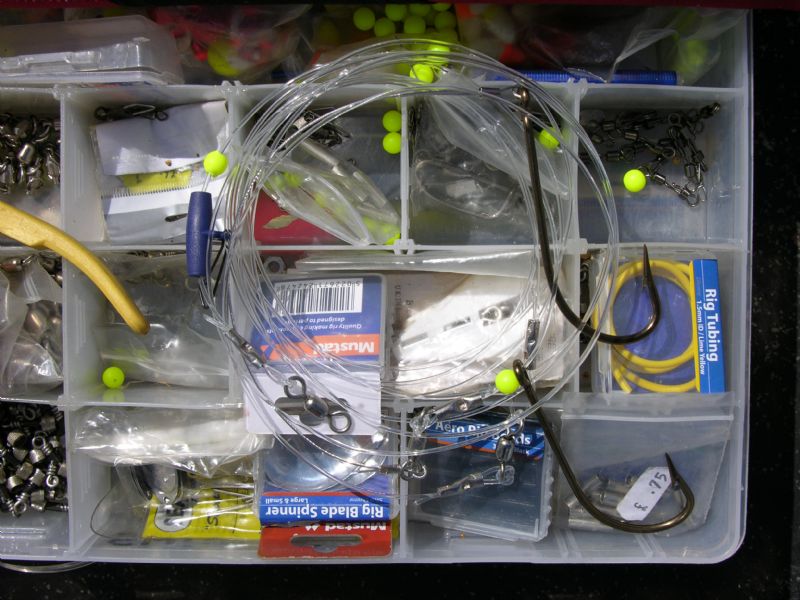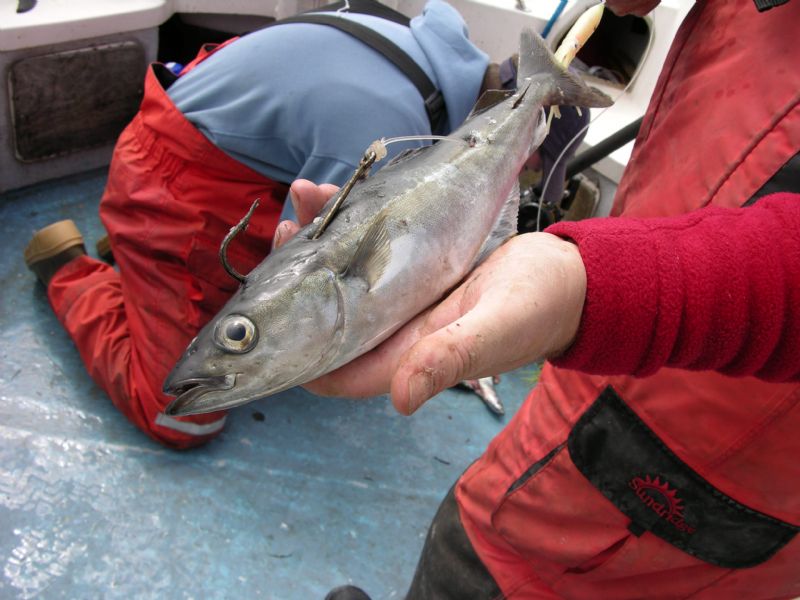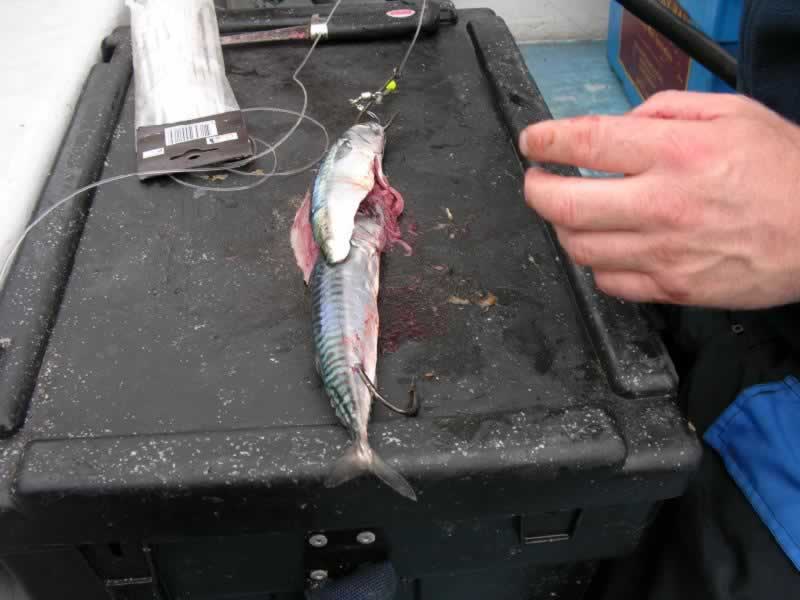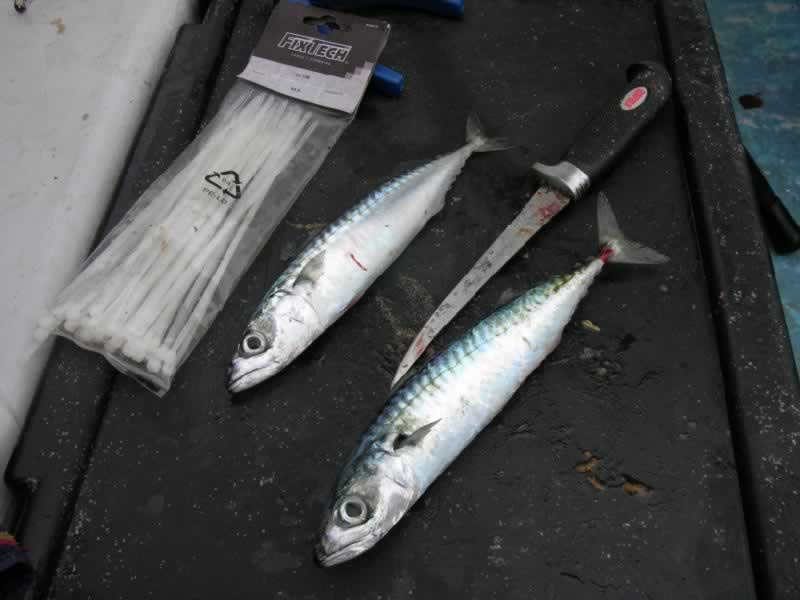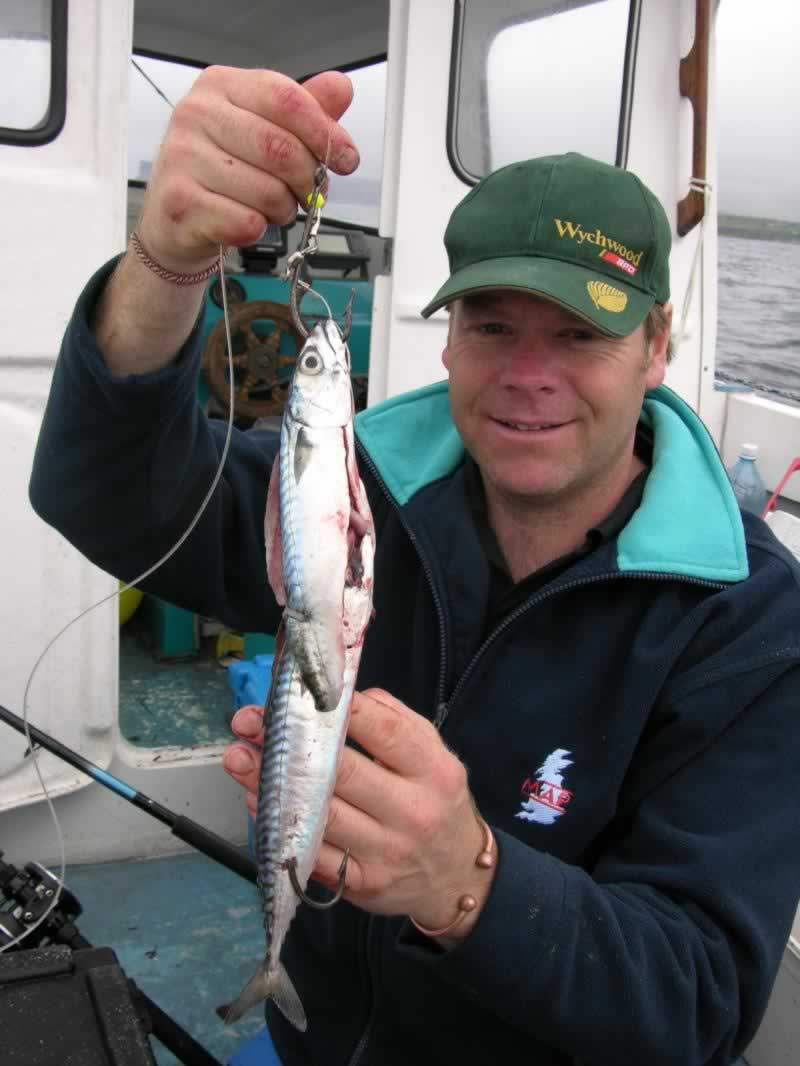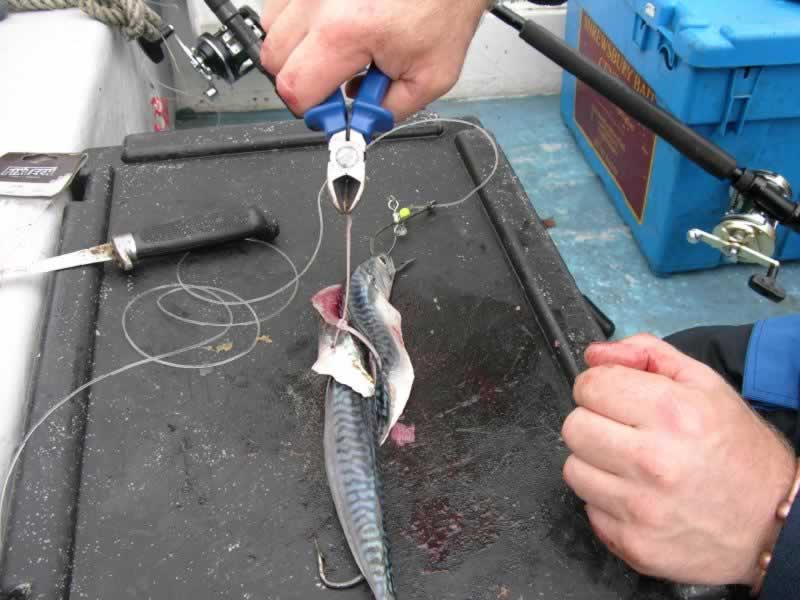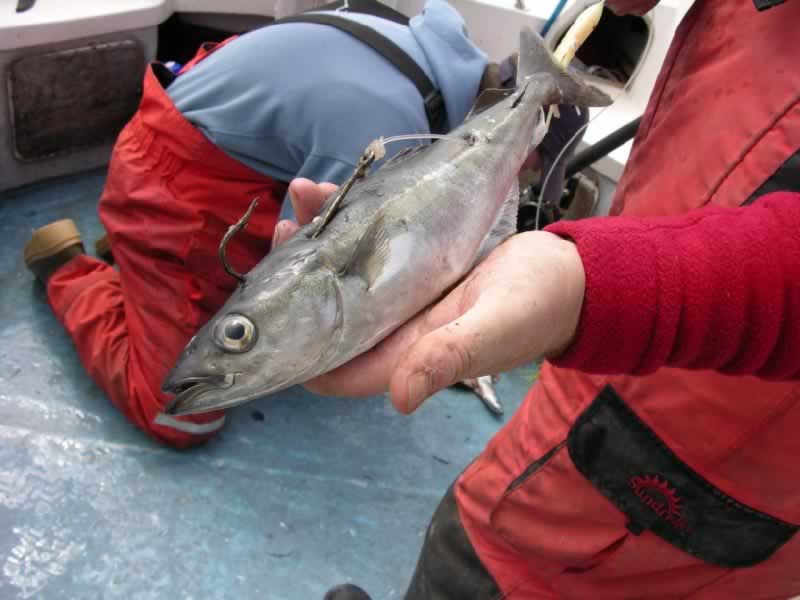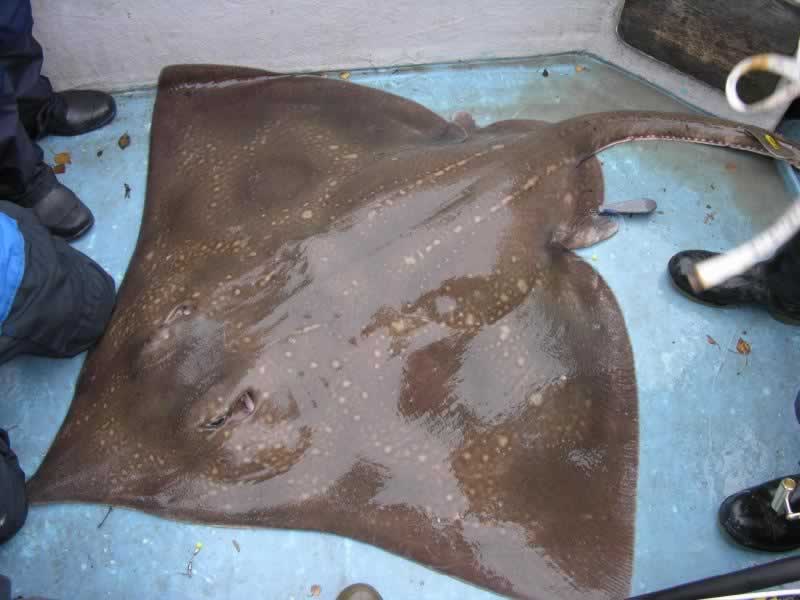Specimen Hunting Series part 1 Common Skate
The Common Skate Challenge
Profile
Latin name, Raja batis Irish record, 221 pounds taken in Ballycotton in 1913 by T.Tucker
Article 1 of a twelve part series, originally written for Irish Angler magazine several years ago
Introduction
A recent phone call from the editor of Irish Angler certainly set me thinking. “I want to run a concept by you, see what you think” he said. “Would it be possible to target a different species at specimen weight each month throughout the year?” Before I had a chance to answer, he continued “and if so, would you be able write an article each month describing the process?”
Obviously this is quite a task, not just from the target weight of each species but also from adverse weather and water conditions throughout the year, not to mention the commitment of an article every month! However, as I am always up for an angling challenge, I accepted and began by jotting down the months of the year and working out which species would best coincide with each particular month. The beginning of the year would be the toughest, but after careful consideration I came up with my first candidate for January, the Common Skate.
Toughest part after "hook-up" is actually lifting the fish off the sea bed
Now, I realise that any dedicated specimen hunters reading this will say that Skate are not an eligible species, and this is quite true. In the interests of conservation, the Irish Specimen Fish Committee quite rightly removed Common Skate from its list back in 1976, and at the minute will only consider a possible new record. However, this does not mean anglers cannot target them. The tagging scheme in operation has proved that with careful handling, these huge creatures can be caught and released many times with no apparent adverse effects.
Prior to suspension, the qualifying weight was one hundred pounds, and with detailed measurement/weight tables now in existence, it is possible to calculate a very accurate weight for any Skate captured. In fact, I cannot see why this could not be introduced back into the specimen records for not only Skate but also large sharks. I have caught many small Skate in the past that I have been able to weigh, and then compare to the table, which has proved remarkably accurate on every occasion.
With the species nominated, and a target weight of one hundred pounds or higher to achieve, thought must be given to a suitable venue. With more anglers targeting these wonderful creatures now days, Common Skate are recorded around most of Ireland, but Ballycastle on the North Antrim coast has to be a particular favourite of mine. With favourable southerly winds predicted for the weekend, conditions looked good and so, preparations were made towards my Skate-hunting trip.
More pressure required, as this specimen refuses to budge!
The trip
On arrival at Ballycastle Harbour we were relieved to see a reasonably calm sea. Southerlies here happen to be off shore, and boat anglers often benefit from the shelter provided by steep cliffs, hillsides, and Fair Head to the East. The slip facilities are superb but there is a launch fee of £9.50 per boat per day at time of writing. If you intend to use this harbour on a regular basis, a yearly permit is more economical.
We were soon launched and feathering for Mackerel, luckily finding a few stragglers for fresh hook baits. A couple of minutes steam westwards put me over the mark that had been recently producing Skate for Sean McKay, the local skipper here. Once in position, a bag of frozen, pre-made rubby-dubby was cable-tied to the anchor chain and lowered to the depths. As the anchor took hold, the boat swung into position, dramatically revealing the speed of the tide as it rushed past us like a river.
It would be several hours before the tide eased so plenty of time to set up tackle and relax. Skate angling is a game of patience, even when you think you have done everything right, waiting three or four hours for a bite is not un-common. First drop over and an annoying nod on the rod tip told me Dogfish were about, and I reeled in to find two bare hooks. My next drop over was with three Mackerel, threaded together with cable ties, in a bid to hold off Dogfish long enough to allow a Skate enough time to home in on the bait. Ryan gave me plenty of stick, accusing me of fishing with a shoal of Mackerel! Fortunately I had the last laugh, when ten minutes later, the ratchet squealed as line peeled off the reel at an alarming rate. Lifting twice into the fish to set the hook, it was obvious this was going to be a struggle.
A sizeable Skate had taken the bait, but unusually, during the fastest part of the tide. Normally they dont show until the tide slackens! I held tight as it slowly took line against the clutch, and I quickly slipped on the butt pad and shoulder harness to ease the strain. Three quarters of an hour of pure agony later, the fish surfaced approximately one hundred yards behind the boat, catching the flow with its wings, similar to a kite in the wind. I had the fish beaten but it still took line in the strong current.
Measurements of length and wingspan can be applied to the weight charts for reasonably accurate weight estimation
After another ten minutes, we realised I was fighting a losing battle, and the Skate was now over two hundred yards behind the boat! George and Phil had come alongside to watch the action on their own boat, when George came up with an excellent suggestion. He climbed aboard and un-hitched the anchor rope allowing the boat to drift down tide and catch up with the fish, while I reeled liked fury to keep a tight line. It was not long before the Skate was within reach, and a few grunts and groans saw it safely on deck.
To be perfectly honest, I was thoroughly exhausted and couldn’t have gone on much further. Lucky for me she was a female, as males normally fight harder! Measurements of eighty inches long by almost sixty inches wide put her at one hundred and sixty pounds, well over the magical ton, and the first challenge met. There was just enough time to award her with a yellow tag in the tail and a quick photograph for posterity before sliding her safely back over the gunnels. Hopefully we will meet again sometime in the future, and on a slacker tide!
Trophy shot for posterity before release
If you land a Skate with a tag in place, do not remove it, but record the number. Inform the Inland Fisheries Ireland of the number, measurements and when and where it was captured. This information has built up a valuable source of data over the years and continues to do so.
If this has wet your appetite for a crack at skate angling, contact Sean McKay on 07712167502. Sean operates a charter boat out of Ballycastle and his knowledge and experience as an angling skipper in this area is second to none.
Tackle/equipment
Before choosing a rod for Skate angling, some thought must also go into the selected venue. Although it is possible to land a large fish in excess of one hundred and fifty pounds on thirty pounds class gear, this would be the exception rather than the norm. In fact, Big Phil landed a superb female Skate of one hundred and seventy nine pounds last year on twenty pounds class tackle whilst targeting Blonde Rays. A tremendous achievement, but the battle that ensued totally destroyed an expensive new reel! Most Skate landed at Ballycastle are taken in two hundred feet of water, and usually much deeper. Combined with a fierce tidal flow, anything between two and four pounds of lead are required to keep a large bait “nailed” to the sea bed. Most rods below fifty pounds class are unable to cope with this amount of lead and this will dictate your choice of rod. My personal choice is a fifty pounds class Fenwick boat rod, but after a recent experience in Strangford Lough where I hooked into a monster Skate that I simply could not lift off the seabed, I purchased a 130lb class rod. A bit over-kill it’s true, but up to now this rod has proved itself well in handling large Skate in deep water.
Once the correct rod has been chosen, it is equally important to purchase a quality reel. I cannot stress enough; the pressure exerted on tackle during a battle with a Common Skate will soon find any faults or weaknesses, usually resulting in a disappointing outcome for the angler. I use a Mitchell TI that has performed perfectly to date, or would recommend any of the Penn 6/0 range or similar, these are built to last. The reel should carry five hundred yards of line, and in deep water, sixty pounds breaking strain braid can be invaluable. The thin diameter cuts through the tide allowing the use of lighter leads, a god send when a small Dogfish manages to hook itself and has to be reeled up two or three hundred feet!
Bearing in mind that an average Skate battle will last anywhere between thirty minutes and two hours, make life easier and purchase a shoulder harness. This will support your back and clips onto purpose made “lugs” attached to the reel to take the pressure off your arms. Also, do not forget to use a butt pad. This facilitates the rod butt and serves well in protecting the “family jewels”.
It is important to carry two strong gaffs aboard, as this is the only way to boat a large Skate if you wish to do so. When required, gaff the fish in the extremities of the wings, avoiding damage to internal organs. This causes no harm to the fish. One Skate I had caught in particular had been captured four times previous, and the only gaff marks I could find were the ones I had just made. From constant recaptures, I can testify that the small "gaff-holes" take two-three weeks to heal over completely.
Double line through before "crimping" for added security
End tackle
This is the business end, as they say and, as with your choice of tackle, is obviously every bit as important to get right. A Skate can have a wingspan of five or six feet, which works out at thirty square feet of surface area on each side! This surface area is extremely rough and will cut through nylon or braid relatively quickly. To combat this, it is important to incorporate about six feet of “rubbing trace” into a Skate rig. I use 200lbs breaking strain commercial nylon, slightly excessive I suppose, but it has never let me down and does not seem to deter bites in any way. The hook length should not be too long for two main reasons. First and foremost, a shorter hook length will detect a bite sooner, importantly avoiding deep hooking, especially with smaller Skate. Secondly it helps keep a larger bait firmly on the seabed. In my experience, Skate prefer static bait. Keep the hook length approximately four to six feet.
Hooks must be strong and sharp. Bronze O’Shaugnessy patterns, size 10/0 are ideal and will rust away quite quickly if a fish is deep hooked. Pennel rigs tend to provide a greater chance of success due to the size of bait normally used. Again, it is important to be totally confident of all knots used, as a Skate will soon sort out any weak points resulting in a lost fish. I use copper crimps and Berkley swivels, doubling the nylon through the swivel before crimping into position. Although 200lbs nylon is sufficient to land skate, I prefer to incorporate a wire biting trace. When using such large bait, you can never be sure exactly what may lift it and if it is big and has teeth, I want to get it to the surface!
Completed Skate rig
Methods/tips
If you are a boat owner and trying Skate angling for the first time, it is important to anchor. Look for sand banks, gullies or drop offs on the seabed that slope into at least two hundred feet of water. Anchor high on the bank and fish down the slope into the deeper water. Skate respond well to a scent trail so it is a good idea to tie an onion bag of mashed or finely chopped fish and bran to the anchor chain prior to anchoring. Anchor during the fast part of the tide. Angling may be almost impossible at this stage but the scent trail will work well and bring Skate to the vicinity as the tide begins to slacken. Do not be disheartened if the first venture results in a blank. Skate angling requires a certain amount of investigation to get it right. They may only feed on a flooding tide, or the ebbing tide may be the switch that turns them on to the feed. Eventually you will find the key to success. The area may also be seasonal and only respond during certain months. Identify this time slot and you will find fish return to the same mark every year. Identify a hot spot by observing other, fodder fish caught in the area, such as large numbers of Dogfish or Spur dog. Skate will feed on these and their young.
Bait
Skate will readily take smaller baits such as Mackerel fillets or a single Calamari, but this will usually attract smaller, unwanted species such as rays and dogfish. Start with large bait such as whole Mackerel, or several if they are small. Whole large squid can be excellent or try a combination of the two.
I have been told that Dogfish work well in other parts of the country, but not so good in Ballycastle it seems. I have witnessed large Skate taken on whole Coalfish, two-pound Pollack and even two-pound Rainbow Trout. A recent trip where Dogfish were a nuisance, pulling Mackerel baits to pieces, I eventually caught a male Skate of 115lbs on four whole Mackerel cable-tied together! This demonstrates the size of bait or fish a Skate is able to engulf.
Facts
The specimen weight had been set at 100 pounds as an accepted target but due to the dramatic fall in numbers through commercial over fishing and excess angling, it was decided, in 1976 to suspend Common Skate from the list in a bid to aid conservation. This suspension is reviewed each year.
Skate are slow growing and do not reach sexual maturity until ten years of age. They lay approximately 40 eggs per year but are believed, when given the chance, to live up to 50 years of age.
Being long-lived and slow to mature, they are particularly vulnerable to commercial fishing, both as a target species and as a product of by catch. Although Common Skate are listed on the UK Biodiversity Action Plan to help protect and promote this species by 2004, I have not heard of any areas or habitat that have been offered protection at time of writing.




